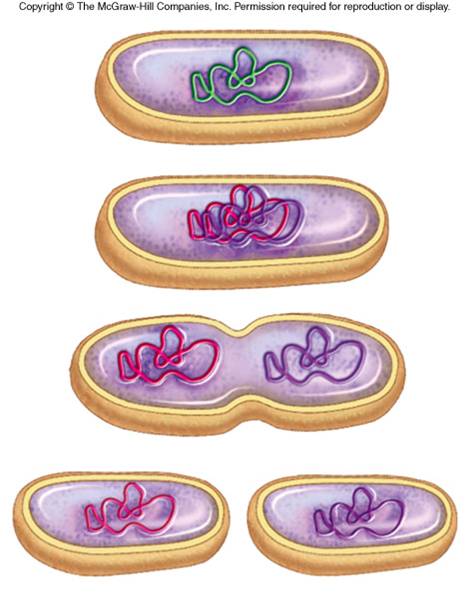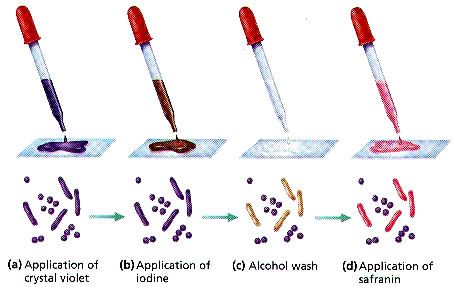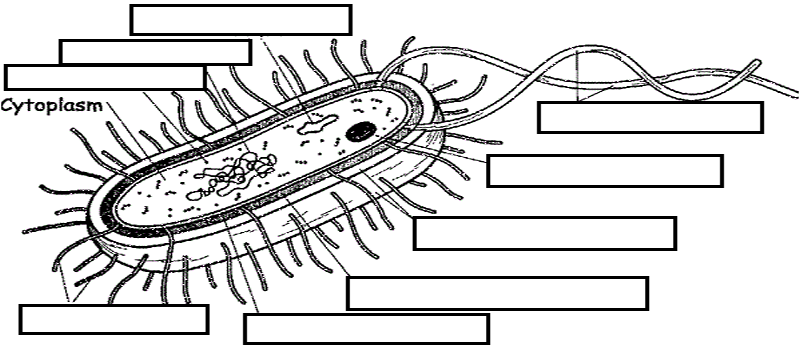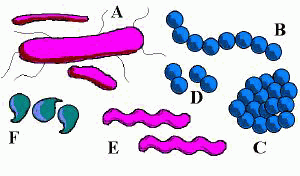Bacteria Form and Function
Bacteria are single-celled microorganisms that are among the most abundant and diverse life forms on Earth. They are prokaryotic, which means their cells lack a nucleus and other membrane-bound organelles found in more complex organisms like plants, animals, and fungi.
Bacteria are classified based on various characteristics, including their morphology (shape and structure), staining properties, biochemical properties, and genetic makeup.
1. Bacteria are classified into two kingdoms:
Eubacteria (true bacteria)
Archaebacteria (Ancient Bacteria).
2. BACTERIA are microscopic prokaryotes. (“before nucleus”)
3. Adapted to living in all environments (even some extreme) – they exist everywhere
Bacterial Structure
II. Reproduction in Prokaryotes
Binary fission is the splitting of a parent cell into two daughter cells; it is asexual reproduction in prokaryotes.
In bacteria, genetic recombination can occur in three ways.
1. Conjugation
2. Transformation
3. Transduction
III. Prokaryotic Nutrition
Anaerobic / Aerobic
Autotroph ( Chemotroph or Photosynthetic ) / Heterotroph
Mutualists (symbiotic) nitrogen‑fixing Rhizobium bacteria / Gut bacteria in humans
IV. BACTERIA CLASSIFICATION
1. Three basic shapes: coccus / bacillus / spirillum

2. Those shapes can be organized into
staph = clusters / strep = chains
A. Bacillus B. Streptococcus C. Staphylococcus D. Diplococcus E. Spirllum F. Vibrio
3. Gram Stains
Used to identify bacteria / Gram Positve = dark purple / Gram Negative = pink

VI. Bacteria and Health
| Streptococcus | strep throat, related bacteria causes necrotizing fasciitis |
| Staphylococcus aureas | found on skin, responsible for minor infections, boils, pimples; MRSA is an antibiotic resistant form; some strains cause necrotizing fasciitis |
| Bacillus tetani | causes tetanus (lockjaw), most people are vaccinated |
| Clostridium botulism | causes botulism (food poisoning) |
| Yersinia (bacillus) pestis | causes Black Plague |
| Bacillus anthracis | anthrax |
| Mycoplasmas | very tiny, cause of pneumonia |
| Salmonella | Belongs to same family as E. coli, also causes food poisoning |
| STreponema pallidum | Spiral shaped bacteria, syphilis |
| Escherichia coli | E. coli - common bacteria of the digestive tract, causes food poisoning, GRAM NEGATIVE |
| Bacillus Subtilis | Hay bacteria, easy to grow in lab, GRAM POSITIVE |
Antibiotics and Antiseptics
Joseph Lister / Antiseptics
Alexander Fleming / Penicillin (1945, Nobel prize)

